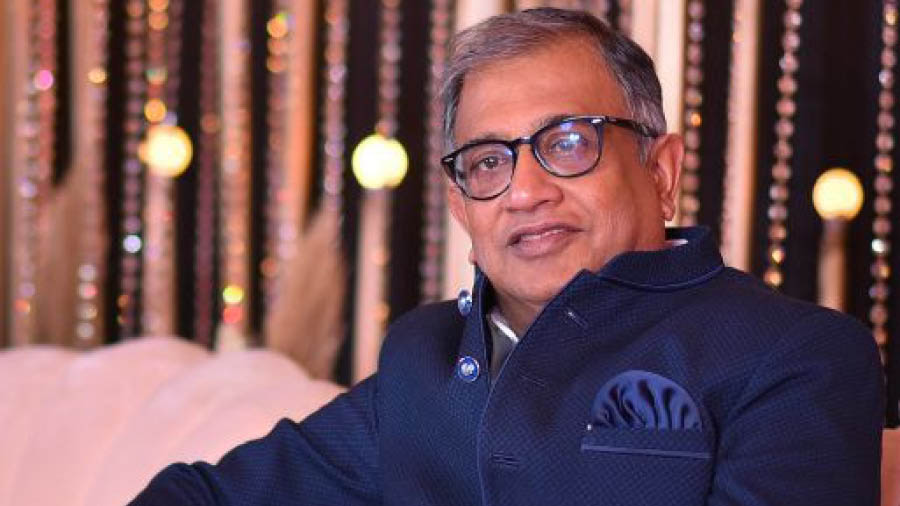The World Health Organisation (WHO) recommends at least one doctor per 1,000 people for a country’s healthcare system to be functional and effective. India, where the doctor-population ratio hovers around 1:850, meets that requirement comfortably. But in the absence of proper medical infrastructure and inadequate investment in healthcare — before Covid-19 struck, India’s percentage of GDP spent on healthcare was lower than the likes of Afghanistan, Argentina, Lebanon, Pakistan and Zimbabwe — even a lot of doctors can do very little.
This was evident during the Covid-19 crisis, chiefly during a disastrous second wave in 2021, when Souradipta Chandra, 40, was in the eye of the storm in Delhi. A consultant physician at Delhi’s Helvetia Medical and Diagnostic Centre since March 2018 as well as the Medical Advisor to the Delegation of the European Union to India, Chandra is well placed to identify the lacunae that crippled India’s Covid response and continues to affect everyday healthcare in the country. During the second wave of Covid, Chandra’s videos analysing the pandemic response went viral on social media, gathering over 15 million views globally.
My Kolkata caught up with Chandra over Zoom on his medical journey from Kolkata to Delhi, how medical repatriation works and more. Edited excerpts from the conversation follow.
My Kolkata: Were you born and brought up in Kolkata? What were your formative years like?
Souradipta Chandra: Yes, I was born and grew up as a typical South Kolkata boy on Elgin Road. I come from a family of doctors. My grandfather was a pioneering orthopaedic surgeon and our family hospital, Dr Chandra’s Orthopaedic Hospital, continues to operate on Elgin Road, where it’s currently run by my father and other family members. I did my schooling in St. Xavier’s Collegiate School, and also got a taste of the hip and happening life at St. Xavier’s College in XI and XII, before moving on to the Calcutta National Medical College (CNMC). St. Xavier’s helped me become the person I am today, and I’ll always be grateful to my legendary teachers, many of whom continue to inspire me.
‘CNMC grounded me and equipped me to not just become a doctor but learn how to survive’
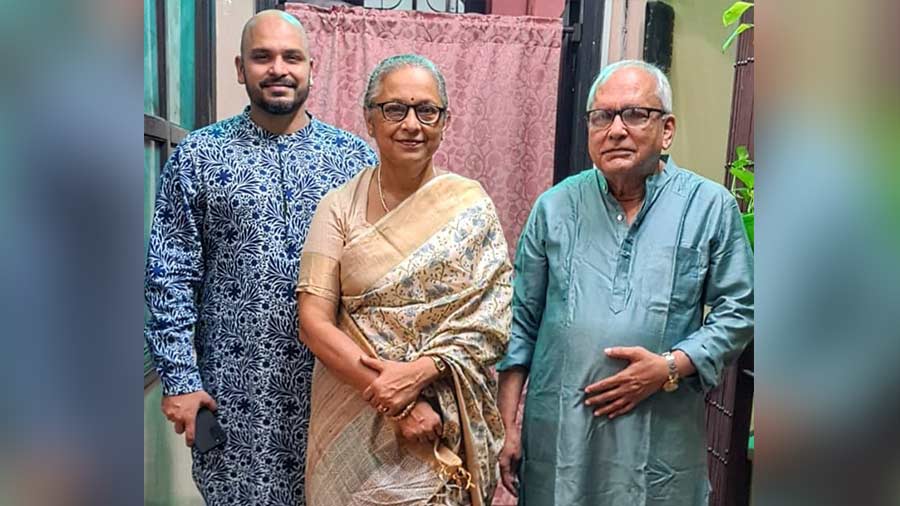
Chandra with his parents
How did your time at Calcutta National Medical College (CNMC), where you completed your bachelor’s in medicine, shape you?
I spent six-and-a-half years at CNMC, which was walking distance from my house. My friends and I at CNMC were a rebellious lot. We’d bunk classes to go watch movies, especially because Forum mall had just opened and it had a multiplex! We balanced our studies and fun and actually developed a lot of the social skills through our time together that became really important for us as doctors later on. I also had some of the nicest and most fabulous professors at CNMC, who made it easier to cope with the rigours of the syllabus.
After finishing my MBBS, I was thrust into the world of internships, as we all are. That’s where one gets the taste of the real world. Almost overnight, I went from a student to being one of two interns handling an emergency room in a hospital. I’d be starting surgeries and learning on the job since there was no time to wait for a senior. During gruelling shifts, I’d go for hours without food, sleep or rest. But that experience grounded me and equipped me to not just become a doctor but learn how to survive and take care of myself in challenging surroundings.
‘Kolkata has a lot to improve upon in terms of medical facilities, civic awareness and doctor-patient relationships’

Chandra started off his medical career in Kolkata before moving to Delhi in 2008
When did you move to Delhi? How would you compare your experience of working as a doctor in Delhi vis-a-vis Kolkata?
I went to Delhi in 2008 after completing my housestaffship in the gynaecology department at the Chittaranjan Seva Sadan Hospital in Kolkata. I had gone to Delhi to sit for the entrance exams at the All India Institute of Medical Sciences (AIIMS) and eventually wanted to move to Mumbai to take up a residency there. But, as it turned out, my preconceived notions of Delhi as a rough city proved wrong. I quite liked my time there and was offered a residency in oncology by Apollo Hospitals. Following that, I took up other roles but ended up staying in Delhi. However, I make it a point to come back to Kolkata during Durga Puja, Diwali, Christmas and family occasions.
When it comes to comparing Delhi and Kolkata, the first time I came to Delhi I could see the difference in the overall as well as the medical infrastructure, which was far superior. Everything was much more systematic and coordinated. In Delhi, there’s far greater civic sense among those in the medical world. In Kolkata, doctors can be aggressive with patients. And patients tend to charge or challenge doctors more. That creates a culture of aggression and violence in Kolkata, which is one of the reasons why I haven’t come back to work in the city. Kolkata has a lot to improve upon in terms of medical facilities, civic awareness and doctor-patient relationships.
Give us an insight into the dwindling away of general practitioners (GPs) in the Indian healthcare system.
Unfortunately, the concept of a GP is almost non-existent in India now. In the UK, under the National Healthcare System (NHS), every person is assigned a GP. But over here, search around in your neighbourhood and see how many GPs you have. Considering our population as a country and how overburdened specialists are, India needs a lot of GPs. The medical community is hell-bent on specialisation, but family medicine and general medicine through a good GP, who can get the basic treatment in place before referring you to a specialist, can take a lot of the load off the rest of the healthcare system.
‘Here’s your visa. Hurry up, you have a life to save!’
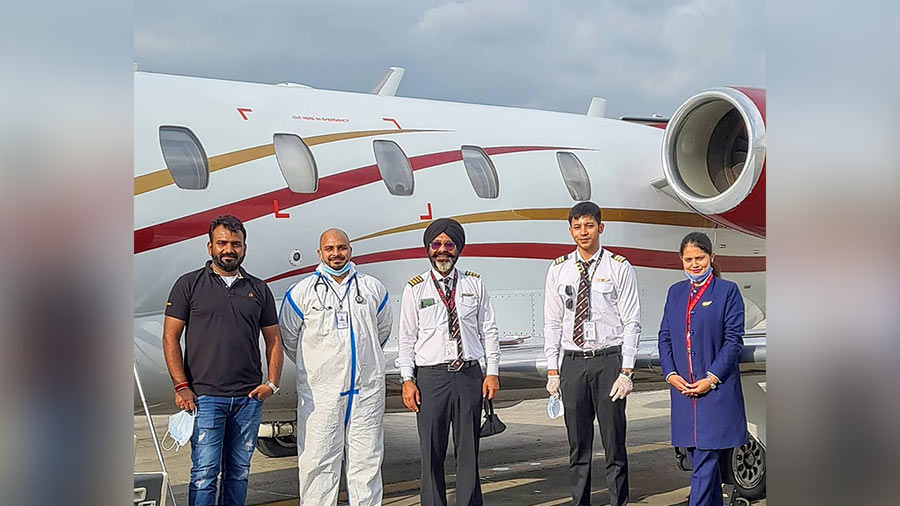
Chandra has been involved in medical repatriation for more than a decade
You have worked extensively in the field of medical repatriation. Can you take our readers through the workings of this life-saving industry?
Medical repatriation basically means transferring critical patients across the world while ensuring their recovery and rehabilitation. My journey in medical repatriation began with Delhi’s East West Medical Centre, where I worked for five years and got to travel the world.
If you’re working with a reputable organisation, then everything becomes much smoother. I remember being told by my mentor a decade ago that I had to go to Minneapolis in the US to transfer an orthopaedic patient on a day’s notice. I had no idea how that was going to be possible since I had never been to the US and didn’t have a US visa, which can be a nightmare to get. My mentor, the late Dr NPS Chawla, assured me that I just had to turn up at the US Embassy. When I did, a head popped out of a window and said: “Oh, you’re Dr Chandra. Here’s your 10-year US visa. Hurry up, you have a life to save!” I was amazed.
Apart from logistical challenges with visas, there are also the airlines who need to provide clearances. That can be challenging when flying commercial, but things usually work out in time when you belong to an organisation that’s doing good work. There are people who can and do use the industry for unethical purposes, but airlines and governments generally detect them and stray clear of them.
After East West, I’m presently the medical director at another organisation in the field called First Assist. And I’m glad to say that in my 11 years of involvement in medical repatriation, which have involved attending to patients’ vitals, setting up ventilators and reviving them mid-air, I’ve not lost a single patient till date.
‘The Indian government failed us during Covid’
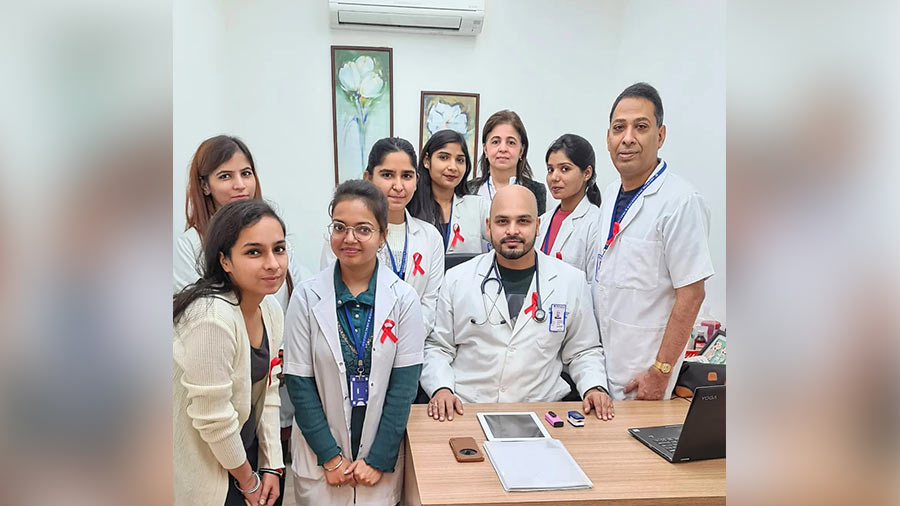
Chandra with his colleagues in Delhi
As a doctor who closely watched the Covid-19 crisis unfold, what did you make of India’s response to the pandemic at an institutional level as well as at a humanitarian level?
When the first wave was gathering momentum across the world in the first couple of months of 2020, my team and I started planning. We stocked oxygen cylinders, trained personnel to deliver CPR and taught our drivers how to wear PPE kits so that they could drive ambulances if and when required. If, as common doctors, we had the foresight to get these measures in place, then why did our governments not know what to do? Where was the amping up of hospitals, beds and basic medical facilities? Why was enough oxygen not brought in?
After the first wave subsided, we had a year to prepare. But very little changed. As doctors, we knew that things would go from bad to worse during the second wave. We begged the government for oxygen, for ventilators, for more beds. Whether patients came in a Mercedes or in an auto to the hospital, they were barely managing to crawl out. People were dying left, right and centre. Funeral pyres were being set up on the streets. When we were in the eye of the storm in Delhi, our key leaders were campaigning for the (Assembly) elections in Bengal. I didn’t see one bureaucratic official visit any of the hospitals and try to find out what was wrong. Not one person in power came to us when we needed them. As leaders and humanitarians, the Indian government failed us during Covid. Having messed up on multiple levels, they didn’t even apologise for their mistakes.
What are the most important lessons from Covid that India must learn to be better prepared for a future pandemic?
First, increase the number of doctors. During Covid, every doctor was attending to 100 to 150 patients on a daily basis. Doctors were committing suicide because they couldn’t take the trauma of seeing so many of their patients dying. Second, invest in medical facilities. Instead of spending on statues, spend on hospitals and local clinics. Third, have a system where those that don’t have basic knowledge about healthcare can at least receive basic treatment. Today, if someone needs a hernia operation but doesn’t have the awareness or the resources to do what’s required, there should be someone who can guide them and take them to the right place. We can’t have a system where there’s chaos everywhere.
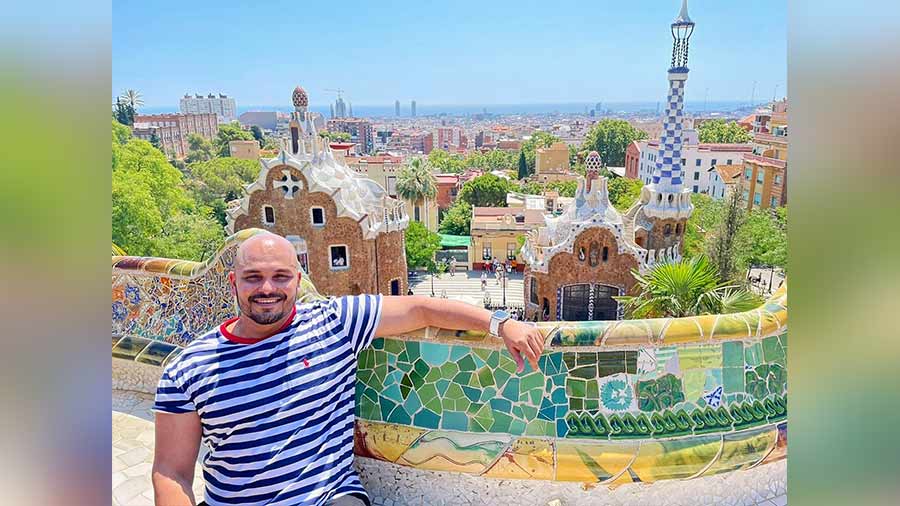
‘Learn to be patient with your patients’ is Chandra’s advice to young doctors
Your message to young doctors entering the healthcare industry in India…
No matter how many degrees you get, you have to learn to heal a patient, not just treat them. Almost 50 per cent of a patient’s symptoms can be addressed just by talking to them, listening to them, and gaining their trust. Ultimately, you’ve got to learn to be patient with your patients.


